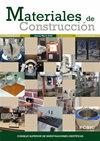Exploring the impact of graphene oxide on mechanical and durability properties of mortars incorporating demolition waste: micro and nano-pore structure effects
IF 1.5
4区 工程技术
Q3 CONSTRUCTION & BUILDING TECHNOLOGY
引用次数: 0
Abstract
In this study is explored the use of construction and demolition waste as fine aggregate in mortars. The addition of nano-graphene oxide (0.1%wt) has also been evaluated. Tests were conducted to determine their density, humidity content, water absorption capacity and open void porosity (using water absorption) and the micro and nano-porosity using Hg intrusion and N2 absorption techniques, as well as their flexural and compressive strength and resistance to acid attacks. The mechanical properties of mortars manufactured with standard sand were better (30%) than made with waste aggregate. Mortars with both aggregates can be classified as M20. Nano-Graphene oxide acts as a filler, reducing the volume of macro and micro pores, thereby increasing the mechanical performance, especially when recycled aggregates are used (30% the flexural strength for recycled aggregates and 4% for standard sand). The addition of nano-graphene oxide reduces the transmission channels of acid within mortar.探讨氧化石墨烯对废砂浆力学性能和耐久性的影响:微孔和纳米孔结构效应
本研究探讨了建筑垃圾作为细骨料在砂浆中的应用。纳米氧化石墨烯(0.1%wt)的加入也进行了评价。通过试验确定了它们的密度、湿度含量、吸水能力和开孔孔隙率(吸水法),以及汞侵入和氮气吸收技术的微孔和纳米孔隙率,以及它们的抗折、抗压强度和抗酸侵蚀能力。用标准砂配制的砂浆力学性能优于用废骨料配制的砂浆力学性能(30%)。具有两种骨料的砂浆可归类为M20。纳米氧化石墨烯作为填料,减少了宏观和微观孔隙的体积,从而提高了机械性能,特别是当使用再生骨料时(再生骨料的抗弯强度为30%,标准砂为4%)。纳米氧化石墨烯的加入减少了酸在砂浆中的传输通道。
本文章由计算机程序翻译,如有差异,请以英文原文为准。
求助全文
约1分钟内获得全文
求助全文
来源期刊

Materiales de Construccion
工程技术-材料科学:综合
CiteScore
3.20
自引率
9.50%
发文量
38
审稿时长
>12 weeks
期刊介绍:
Materiales de Construcción is a quarterly, scientific Journal published in English, intended for researchers, plant technicians and other professionals engaged in the area of Construction, Materials Science and Technology. Scientific articles focus mainly on:
- Physics and chemistry of the formation of cement and other binders.
- Cement and concrete. Components (aggregate, admixtures, additions and similar). Behaviour and properties.
- Durability and corrosion of other construction materials.
- Restoration and conservation of the materials in heritage monuments.
- Weathering and the deterioration of construction materials.
- Use of industrial waste and by-products in construction.
- Manufacture and properties of other construction materials, such as: gypsum/plaster, lime%2
 求助内容:
求助内容: 应助结果提醒方式:
应助结果提醒方式:


